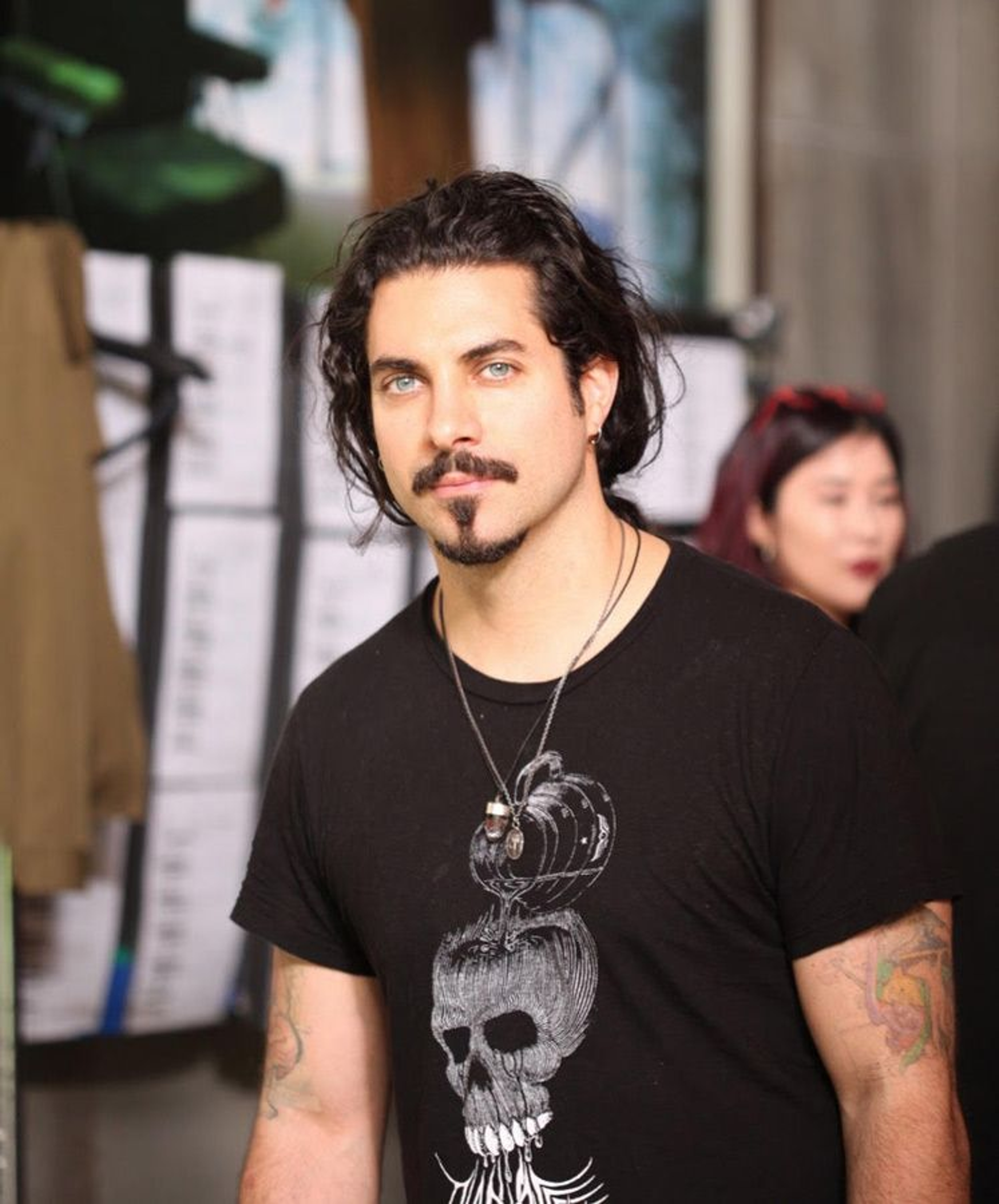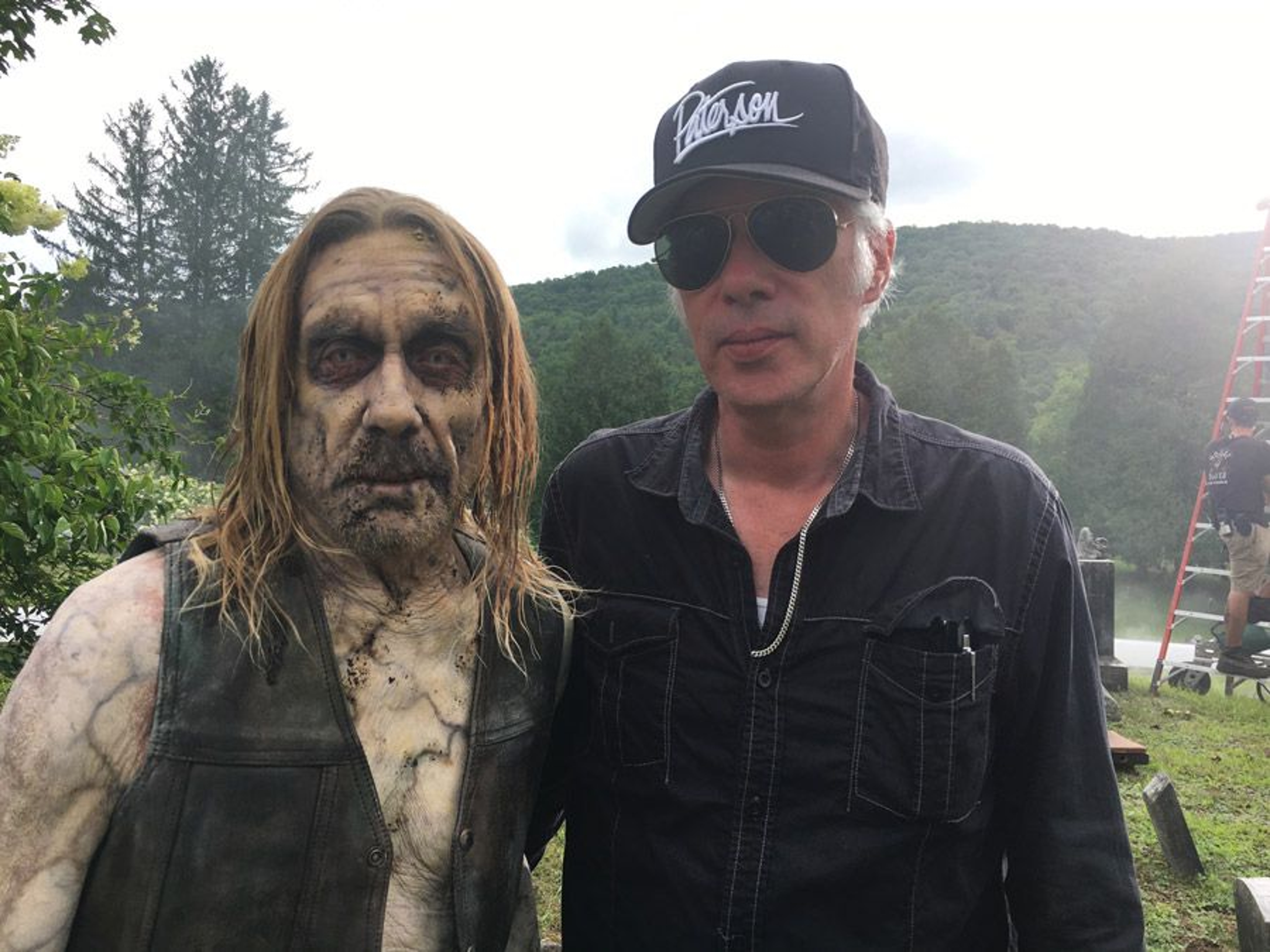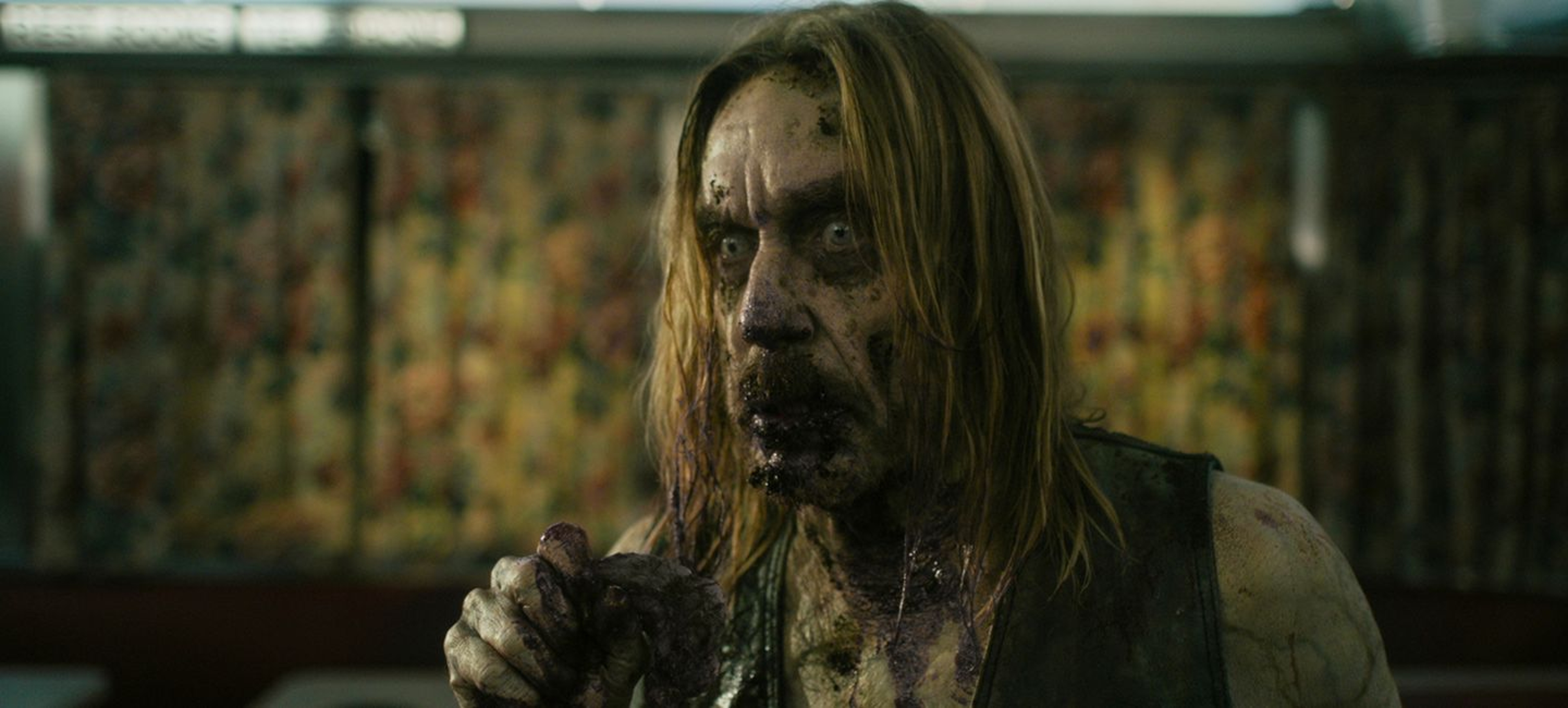When the zombies start climbing out of their graves in Jim Jarmusch's The Dead Don’t Die, it’s clear, as Adam Driver’s character has told us all along, “This isn't going to end well.” Despite the best efforts of the Centerville police department—which is just Driver, Bill Murray, and Chloë Sevigny—the zombies keep coming. From the newly turned to the deeply decayed, the zombies and humans—represented by a stellar cast that includes Steve Buscemi, Danny Glover, Rosie Perez, Iggy Pop, RZA, Carol Kane, Selena Gomez, and Tom Waits—overrun the town in equally terrifying and comic ways. To bring them to life, Jarmusch reached out to Prosthetic Renaissance, an effects company that has brought its cutting edge technology to films as diverse as Black Swan and Night at the Museum: Secret of the Tomb.
We spoke to the Mike Marino, the company’s founder and head designer, and Mike Fontaine, the prosthetic makeup supervisor for The Dead Don’t Die, about what it was like making a zombie universe.
The official trailer for The Dead Don't Die
Can you describe what each of you did for The Dead Don’t Die?
Marino: I own the studio Prosthetic Renaissance which was created to take up where makeup and effects artists from the 80s and 90s—like Dick Smith, Rick Baker, and Stan Winston—left off, but with new materials. We built all the effects and prosthetic effects for the film. Those effects vary from simple prosthetics to face paint to elaborate effects of heads getting cut off and corpses being torn apart.
Fontaine: My job was to be on set and supervise the prosthetic makeup during the shoot. We also built the prosthetics in the shop about a month prior to shooting.

Prosthetic Renaissance's Mike Marino
What did Jarmusch tell you about the project when you first met?
Marino: When we met, Jim told me, “I've never done anything like this before—a zombie movie with effects. I've seen your work and I love it. So help me with the zombies.” I told him, “We will figure out some way to make them really cool.”
What was your central creative challenge for this film?
Marino: I think mostly it was calculating all the different levels of work. We went through the script and figured out how many zombies there were. Jim wanted the zombies to go dusty after they turned, so we had to differentiate dust zombies from fresh kills. How many were fresh kills? How many were zombies that had turned? And how decomposed did we want to go? It was not like we wanted rotting skeletons. Jim really liked George Romero’s Night of the Living Dead. So we took that approach in creating our zombies.
Fontaine: For me, the central challenge was logistical—how do we get so many people in makeup day in and day out while we were shooting in upstate New York—and still have a really high level of quality across the board.
In addition to the original the Night of the Living Dead, were there other references for you?
Fontaine: We loved doing that old school look of Night of the Living Dead. We also looked at a lot of real medical photos of cadavers, injuries, and anything else that might apply. We tried to incorporate a level of realism into that throwback zombie style.
Marino: We also looked at the work of an artist called John Vulich, who owned Optic Nerve Studio, where I used to work. Vulich worked with Tom Savini for the 1990 remake of Night of the Living Dead. Those makeups were so realistic and had this very cool, scary style.
While the effects are pretty horrific, the film is comic. How did you balance those two tones?
Fontaine: We did not approach it with the idea of making funny zombies because it’s a comedy. We played it straight, trying to make everything look very real and terrifying. We let the story and performances set the comic tone.
Marino: I think playing something realistically in a comedic tone can make it even weirder and scarier. With Iggy Pop, for example, there's nothing on him except a really good paint job. His face is already so cool that we didn't want to put on some crazy zombie makeup.
While zombies are usually undifferentiated, you create many with distinct personalities. How did you handle that?
Marino: The script is so funny and so strong that we really didn't have to do much to physically identify the zombies' special traits. Iggy Pop and Sara Driver were nicknamed the coffee zombies because they were big coffee freaks. Instead of human flesh, they are attracted to coffee. We gave them a dripping stain from their mouth. And Carol Kane plays a zombie who keeps asking for Chardonnay.
Fontaine: A lot of personality came from actors. Initially I was worried that with such a high-caliber, A-list cast, they might be uncomfortable having all this paint and glue poured on them. To my surprise and delight, everyone was thrilled to become a zombie. They all brought their own personalities to their characters. Some would suggest things like, “What if this flesh was hanging from my face here?" Or "What if I had this missing piece here?" The zombies were ultimately a combination of Jim's ideas, the script, and the actors sitting in the chair.

Iggy Pop and Jim Jarmusch on set
Were there any zombie effects that were especially memorable?
Fontaine: Larry Fessenden was a zombie that really stood out. When Larry first did his zombie walk, everyone's jaws were on the floor. He absolutely nailed it. Mike [Marino] sculpted this really amazing, anatomically accurate ripped-open back with an exposed spinal cord. It was equally hilarious and terrifying to see Larry on set walking about in a bathrobe with his back and butt chewed up. In a different way, we were trying to find a material that would simulate dirt for when the zombies are crawling out of the ground. We discovered that ground coffee worked really well, especially when it clumped. So the coffee zombies actually have ground coffee on them.
Between the makeup, prosthetics, and digital effects, this seems like a massive amount of organization.
Marino: It was a good collaboration. With Selena Gomez’ disembodied head, we did the makeup on her neck that makes it look severed, and then the digital team erased out her body. When Tilda Swinton lops off heads with her sword, the actual cut is digital, but we created the fake heads that hit the ground or fly through the air.
Fontaine: The organization was a massive undertaking. Mike, Judy Chin, and I met early on to figure out how everything was going to be divided up. Judy and myself had the main departments on set. We would run people in and churn out zombies. We had a stopwatch. Groups of zombies would be sent into the trailer and made up, but when the stopwatch ended, they would have to leave and we would get ready for the next wave. This went on for hours.

Tilda Swinton in The Dead Don't Die
How did you feel when you saw all your hard work up on the screen?
Fontaine: A lot of the film was shot day for night, so during production we saw the zombies in this bright, direct August sunlight. No shadows whatsoever. We were never sure how the makeup would actually look on screen when it would be nighttime. I am very, very happy about how the makeup looks.
Marino: The approach that Mike Fontaine and I take is to try to do the best we can in our style. When we got to see it all finally on the screen, everything looked fantastic. Just great. And the tone of the movie is so cool. This is definitely a Jim Jarmusch film.
Sign up for the Focus Insider newsletter to be first in line for free advance screenings, world premiere travel packages, weekend set visits, and so much more!
